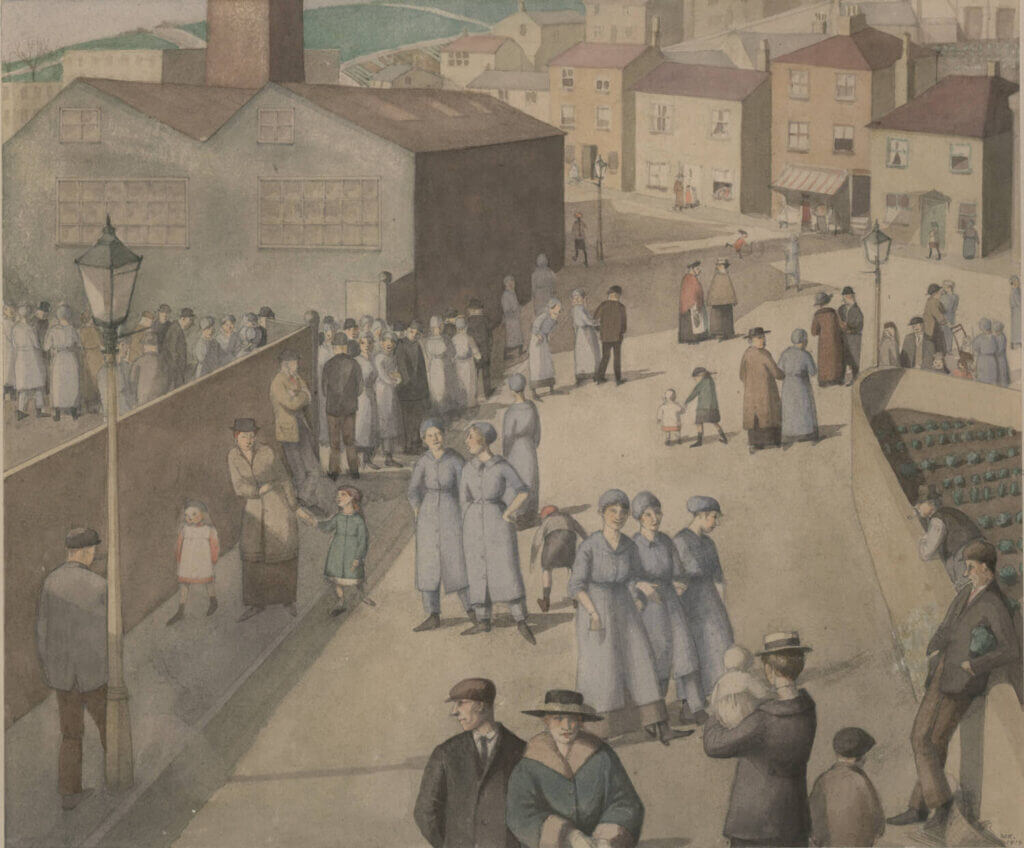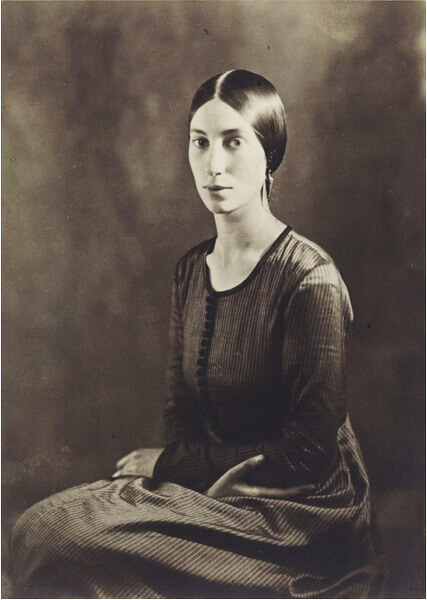Your currently viewing RAW Modern | Switch to RAW Contemporary
Leaving the Munitions Works, 1919
Catalogue essay by Blanche Llewellyn
During 1919 Knights began to excel in the imaginative composition exercises for the Slade School of Art’s weekly Sketch Club, writing to her aunt, Florence Murby: “You will be interested to hear that another Sketch Club criticism is being held next week. Last Sketch Club I had a very good criticism from Tonks. I have sent in two compositions this time. Such a lot of people want to buy them.”
Leaving the Munitions Works (a later Sketch Club submission) features a diagonal road dividing a walled allotment from a factory building, with houses and a patterned landscape behind, placed high on the horizon. A stylistic development from her earlier compositions is apparent, with figures no longer portrayed in isolated groups but interacting convincingly. The three female workers, who walk arm in arm, form a sticking motif, as do a well-dressed couple walking out of the foreground towards the viewer. Strong shadows foreshortened into geometric patterns complete the picture’s underlying rhythm.
This artwork most likely evoked memories of the Blackpole Munitions Works, a significant site just eight miles from Lineholt Farmhouse, where Knights spent time during the war, recuperating from a nervous breakdown. By 1918, this factory, Worcestershire’s largest munitions producer, was dispatching nearly three million cartridges weekly. Its predominantly female workforce, known as the ‘munitionettes’ (approximately 950,000 women WERE employed by the Ministry of Munitions by Armistice Day), became emblematic of female labor during the war.
In this composition, the ‘munitionettes’ (portrayed wearing the ‘national shell overall’ and drawstring cap – clothes that challenged traditional gender stereotyping) are portrayed reuniting with their families after a day at work. Despite the dangers of munitions production, the relatively well-paid roles offered women independence -which allowed economic emancipation- a progress which Knights celebrates in her painting.
Alan Gwynne-Jones, a fellow slide student, acquired this painting, leading to its publication in Londoners, Then and Now (1920). Like other Sketch Club submissions (An allotment, Hayling Island, 1919; A Bank Holiday Fair, 1919) , Knights drew on her memories of wartime experiences. Knights’ engagement with contemporary subjects also reflected her enduring concerns, including war, tradition, gender roles, and societal change.

